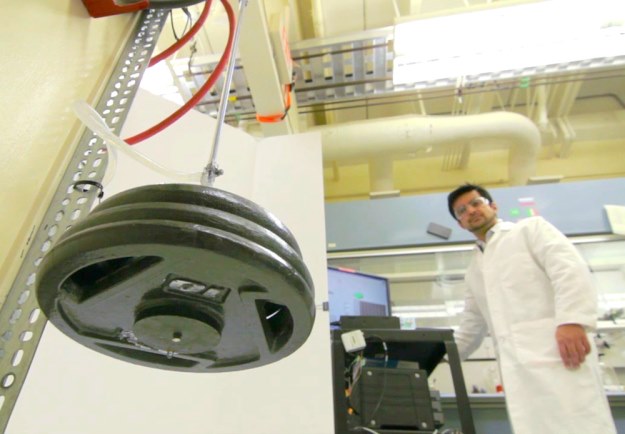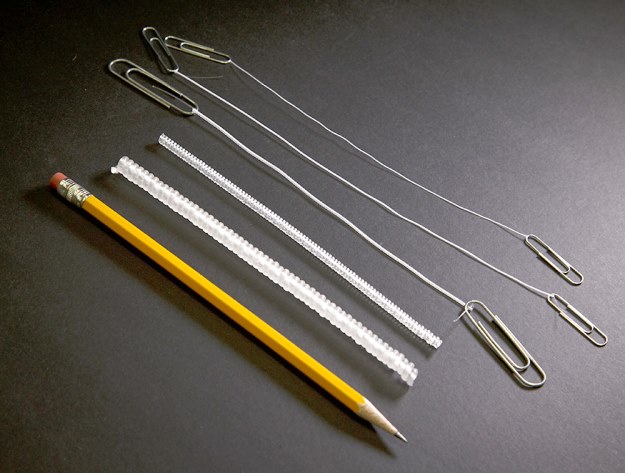A team of researchers from the University of Texas at Dallas have figured out a powerful way to create artificial muscles for robots.

Researchers demonstrate the muscles' strength.
Maybe you wouldn’t think thread or fishing line would be strong enough for such a task, but the team’s new muscle constructed from these materials can lift 100 times more weight and generate 100 times the mechanical power than an identical human muscle. Not only is it powerful, but it’s a cost-effective method, too.
According to the university, “Per weight, these muscles can generate 7.1 horsepower per kilogram, about the same mechanical power as a jet engine.”
How the muscles work
The muscles are powered by temperature changes, which cause the polymer fibers in the fishing line or thread to twist, which in turn transforms it into a twisted muscle that can spin a heavy rotor to more than 10,000 revolutions per minute.

The artificial muscles are powered thermally by temperature changes.
They contract lengthwise when heated and return to initial length when cooled.
In most cases, these muscles would be electrically powered by resistive heating by using metal coatings and wires on the threads and fishing lines. In other situations, they would be self-powered by the environment.
A bundle of polyethylene fishing lines (with a total diameter only 10 times bigger than a human hair) can produce a coiled polymer muscle that can lift about 16 lbs. So, 100 of these polymer muscles, working together like a human muscle, could lift about 1,600 lbs.

Researchers made artificial muscles in a variety of widths from ordinary polymer fishing line.
While a human muscle can only contract by about 20%, these artificial muscles can contract by about 50%.
Applications
As advanced as today’s robots are, they still have limitations.
“Today’s most advanced humanoid robots, prosthetic limbs, and wearable exoskeletons are limited by motors and hydraulic systems, whose size and weight restrict dexterity, force generation and work capability,” said Dr. Ray Baughman, the Robert A. Welch Distinguished Chair in Chemistry at UT Dallas and director of the NanoTech Institute.
So these muscles could be used in situations where superhuman strengths are needed, such as by robots and exoskeletons.
Applications aren’t limited to robotics though. The team also demonstrated possibilities of environmentally powered muscles that could automatically open and close greenhouse or building windows when the temperature changes.
Story and images via The University of Texas at Dallas.
Advertisement
Learn more about Electronic Products Magazine





